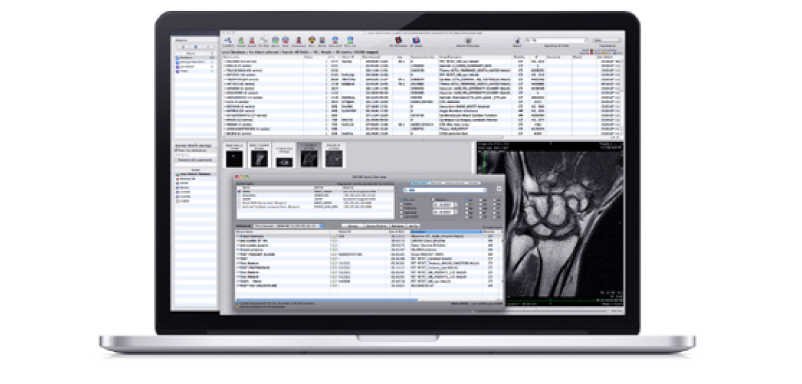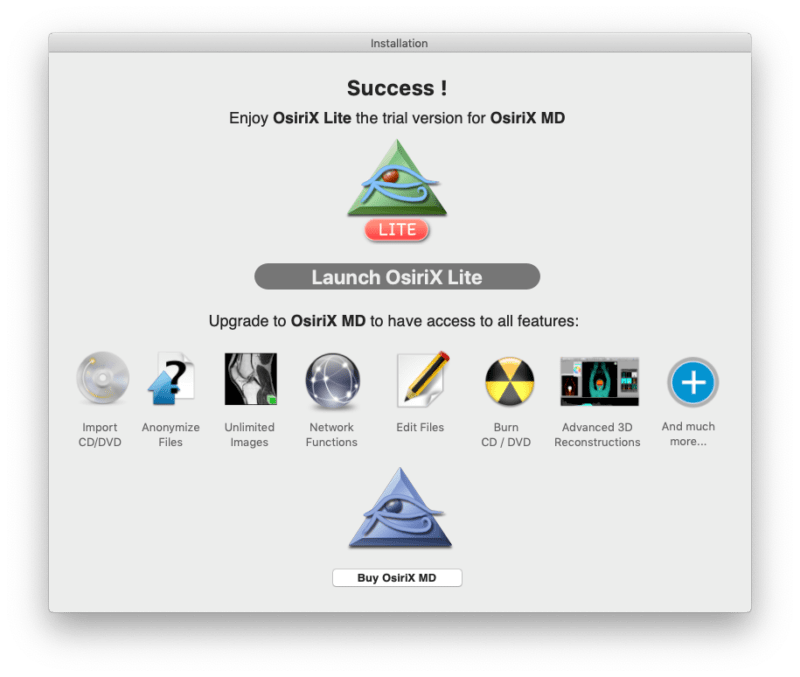

- #Osirix lite dmg not recognised how to
- #Osirix lite dmg not recognised archive
- #Osirix lite dmg not recognised mac
#Osirix lite dmg not recognised mac
Open Disk Utility in macOS Recovery: Start up your Mac in macOS Recovery, choose Disk Utility in the Recovery app window, then click Continue. To access the Disk Utility on a modern Mac-regardless of whether it even has an operating system installed-reboot or boot up the Mac and hold Command+R as it boots. Itll boot into Recovery Mode, and you can click Disk Utility to open it up. Why Can't I Find Disk Utility on Mac?ĭisk Utility is a hard disk management application that comes with the Mac operating system. Although the utility is used to manage a crucial hardware component, you wont find it in the system preferences. Instead, youll find Disk Utility tucked away in the applications folder on your Mac. How do I Start my Mac in Recovery Mode?Ĭommand (⌘)-R: Start up from the built-in macOS Recovery system. Or use Option-Command-R or Shift-Option-Command-R to start up from macOS Recovery over the internet. macOS Recovery installs different versions of macOS, depending on the key combination you use. In the Disk Utility app on your Mac, choose View > Show All Devices. In the sidebar, select the volume you want to restore, then click the Restore button. Ĭlick the Restore pop-up menu, then choose the volume you want to copy.Ĭlick Restore, then click Done. Restart your Mac and hold down the Command and R keys to boot into Recovery Mode. On an M1based Mac, press and hold the power button and wait for a relevant prompt. Recovery Mode lets you restore or reinstall your Mac. Where is Disk Utility on Mac Catalina?ĭisk Utility is an app that comes with your Mac. Its tucked away in the Utilities folder, which is found inside the Applications folder, but is easy to locate using Spotlight which you trigger by pressing Command+Space Bar. To open Network Utility, you can find it from the following path: Finder > Applications > Utilities > Network Utility. New to Mac? Here Are 5 High Sierra Utilities You Should Know You can also launch Network Utility with Spotlight by pressing the Command + Spacebar key and enter: Network Utility to find and launch the app. On the Mac, theyre found in the Utilities folder inside of the Applications folder. Theres an easy way to get to the Utilities folder: from the Finder, select Go > Utilities to display all of the Utilities currently shipped with macOS see screenshot below. When should I Use Disk Utility on Mac?ĭisk Utility can be useful if you are working with RAID sets. Combining multiple disks into a RAID set that acts as a single disk can increase performance, reliability and storage space.
#Osirix lite dmg not recognised archive
You can use Disk Utility to create a disk image of files that you want to move to a different computer, archive or back up.
#Osirix lite dmg not recognised how to
How to Access Disk Utility on Mac OS (mobile Site) #Disk utility for mac archive# Locate and click to open Applications within the left pane of the Finder window. How to Repair a Mac Disk with Disk Utility Scroll to the bottom of the Applications window to locate and click to and open Utilities. How Often should I Run Disk Utility on my Mac? #Disk utility for mac mac# Running Disk Utility every month or two is a good idea for two reasons: repairing permissions, and more importantly, verifying and repairing the hard drive.

In Recovery Mode, macOS runs a special sort of recovery environment. This allows you to use Disk Utility to wipe your entire drive-or repartition it. Partition Drives and Format Partitionsĭisk Utility shows internal drives and connected external drives (like USB drives), as well as special image files (DMG files) that you can mount and access as drives. RELATED: How to Show Empty, Unformatted Drives in Disk Utility on macOS On the left side of the window you’ll see all mounted volumes. This annoyingly leaves out empty hard drives, but click Views > Show All Devices in the menu bar and you’ll see a tree of drives and their internal partitions. Each “parent” drive is a separate physical drive, while each little drive icon below it is a partition on that drive.


 0 kommentar(er)
0 kommentar(er)
